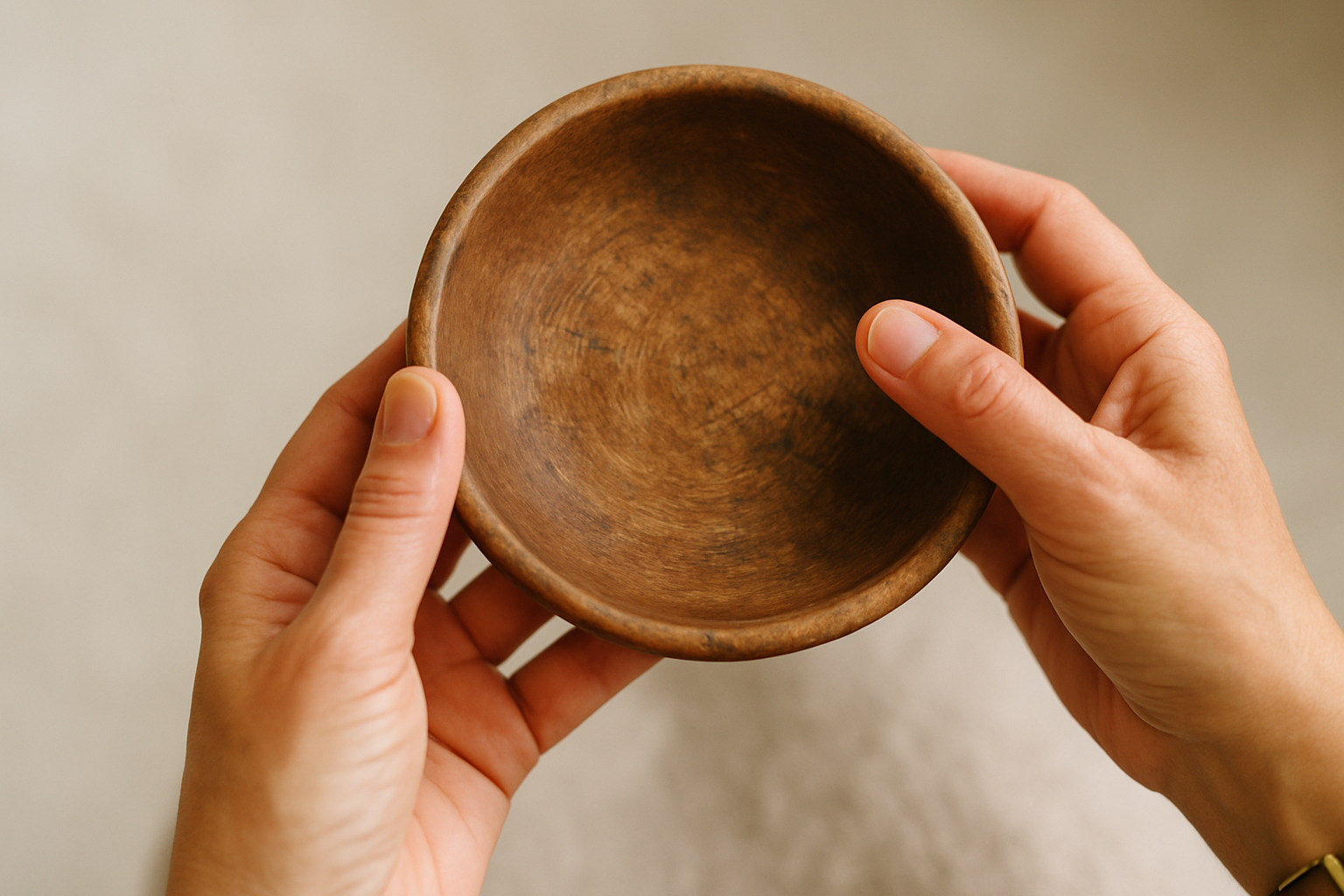The Quiet Power of Objects: How Small Details Have Big Impact
The weight of a well-made mug in your hands on a cold morning. The satisfying click of a quality pen. The way afternoon light catches the edge of a brass picture frame. In a thoughtfully arranged home, it's often the smallest details that make the biggest difference—not because they're expensive or impressive, but because they quietly support the life you're actually living.
Noticing What’s Already Working (and What Isn’t)
Even when you've put thought into your home, it's easy to stop noticing how individual objects affect your daily experience. You might love your overall aesthetic but still find yourself working around that lamp that never gives quite enough light, or reaching past the mug that looks beautiful but doesn't feel quite right in your hands.
This week, pay attention to which objects in your daily routine feel effortless versus those that require small accommodations you've stopped noticing. Your coffee setup, the chair you work in, the tools you use for cooking. Some enhance the experience, others you've learned to work around.
Recognize the difference between objects that truly serve you and those that are just taking up space. When you start noticing these distinctions, you can make more intentional choices about what deserves a place in your daily life.
Choosing Objects That Earn Their Place
The best objects in your home work on multiple levels: they perform their function beautifully and add something meaningful to your daily experience. This goes beyond basic quality to think about how objects make you feel when you use them.
When you're considering whether something deserves space in your home, a few questions can help:
Does it make the task more pleasant? The wooden cutting board that feels solid and confident under your knife. The linen towel that gets softer with every wash. The lamp that provides exactly the right light for reading.
Does it fit your aesthetic vision? Objects that harmonize with your style create visual calm, while those that feel arbitrary or clash can subtly affect how relaxed you feel in the space.
Does it have meaning worth preserving? Whether through excellent craftsmanship, personal history, or simply the fact that it consistently makes you happy to use it—the best pieces tell a story about what matters to you.
Creating Space for Your Best Pieces
Giving your favorite objects more space around them often makes them more powerful. When every surface is full, even beautiful things compete for attention. When you practice restraint, individual pieces can actually enhance your daily experience.
Think about your most-used spaces. Could clearing one surface completely—except for a single object you love—change how the whole area feels? Maybe your bedside table with just a lamp and current book. Or your kitchen counter with only your coffee essentials visible.
This isn't about stark minimalism. It's about being selective enough that each visible object feels intentional rather than accidental. The clear space isn't emptiness—it's room for your eyes and mind to rest.
Building Slowly, Choosing Well
The most satisfying homes aren't decorated all at once—they're built through patient choices that prioritize lasting appeal over immediate gratification. This means being willing to wait for the right lamp rather than buying the one that's just okay. It means choosing the mug you'll reach for every morning over the one that merely matches your dishes.
When you approach your home this way, you end up with objects that improve rather than tire over time. The brass lamp that develops character with age. The wooden bowl that becomes more beautiful with use. The print that takes your breath away every morning.
This patient approach creates homes that feel genuinely personal rather than pulled together from a catalog. Each object has earned its place through both beauty and utility.
Making One Thoughtful Change
This week, pick one daily routine where you could upgrade a single object to make the whole experience more pleasant. Maybe it's finally getting the reading lamp that provides perfect light. Or finding the coffee mug that feels exactly right in your hands. Or choosing a pen that makes writing feel effortless rather than functional.
The goal isn't to replace everything—it's to be more intentional about the objects that touch your life most frequently. When these daily interactions feel considered rather than accidental, your home becomes a true reflection of your values and taste.
Soon we'll explore how these thoughtful object choices work together with your space design to create a home that consistently feels like a place of restoration and joy.


